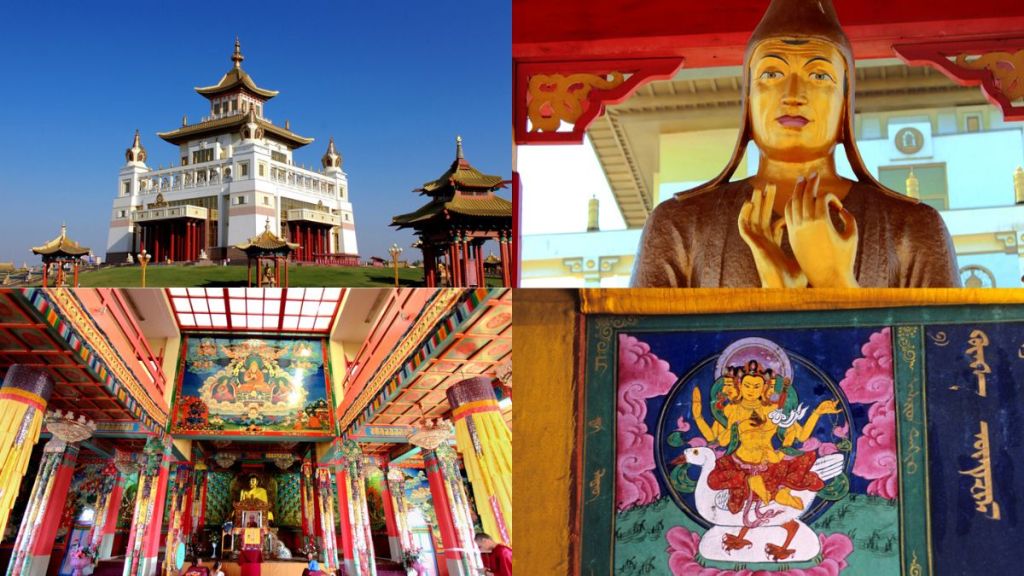By Prof Benoy K Behl
A seeming miracle in the story of man is the travel of cultural and philosophic ideas, over vast distances and across formidable natural barriers. The warm acceptance and sharing of the ideas of life in distant places, underlines the sameness of the human condition everywhere. One of the great examples of cultural sharing, despite vast distances, is the relationship between India and Russia. Even in the “Tale of Bygone Years”, the oldest Russian chronicle compiled around 1113, India (literally Indiya) is mentioned on the first page in the history of the creation of the world. This shows clearly the historic importance of India-Russia relations.
The Prime Minister of India Narendra Modi is travelling to Russia on July 8th and 9th, 2024. This visit is to dynamically take forward the warm ties between the two countries. It is time also to look afresh at new dimensions of our cultural relations, beyond what is traditionally known.
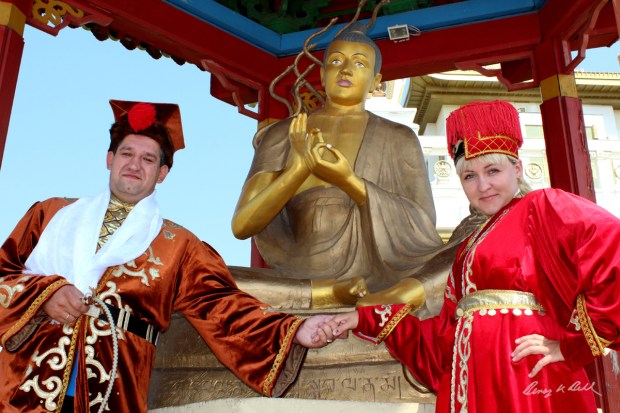
Nalanda, at the Golden Abode of Shakyamuni Temple, Elista, Kalmykia, Russia. Photograph by
Benoy K Behl
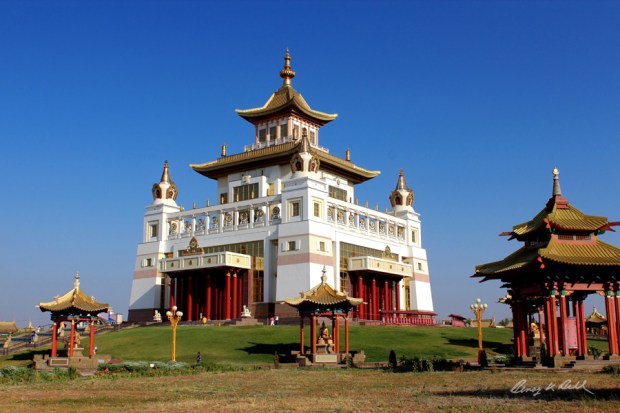
part of Europe.
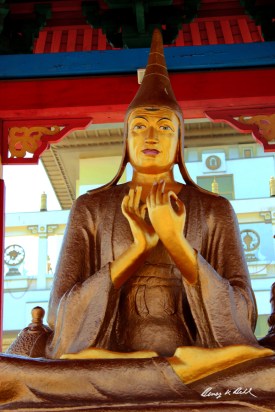
Behl
The temple at Kalmykia honours 17 great acharyas of the Nalanda University. Atisa was born in Bengal,
studied at Nalanda and in Indonesia and taught Buddhism in Tibet. He is known as a cornerstone of
Buddhism in Tibet.
Somehow, there is a natural inclination of the people of both countries to take a deep interest in each other’s literature, art and philosophy. Of course, the dance, music and emotional content of Bollywood films has always been extremely popular in Russia. When the author’s photographic exhibition on ‘Buddhist Heritage of India’ opened in Buryatia, in Siberia, it was such a pleasure to see an excellent Bollywood song and dance performance by Russians. The exquisite grace of Russian ballet has been vastly appreciated by Indians. In giving online talks for Russian institutions, the author has been very pleasantly surprised to learn that the Chitrasutra, India’s ancient treatise on art-making, was recently translated into Russian. Such is the deep and scholarly interest which Russians take in Indian heritage and culture.
An outstanding example is the great Russian intellectual and painter Nicholas Roerich, who spent the last 20 and most fruitful years of his life in Kullu Valley in India. He was deeply influenced by the mystical beauty of the Himalayan ranges and he placed Himachal Pradesh on the artistic map of the world.
There was a time when there was no country in South and South-East Asia, East Asia and Central Asia, where Indic deities, Gautama Buddha, Shiva, Vishnu, Garuda, Ganesha and others, were not revered. Buryatia in Siberia, Russia marks the Northernmost spread of Buddhism and Buddhist cultural heritage. The Russian Empress Catherine the Great recognized the first official head of the Buddhist Sangha of Russia Khambo Lama Zayayev in 1764./
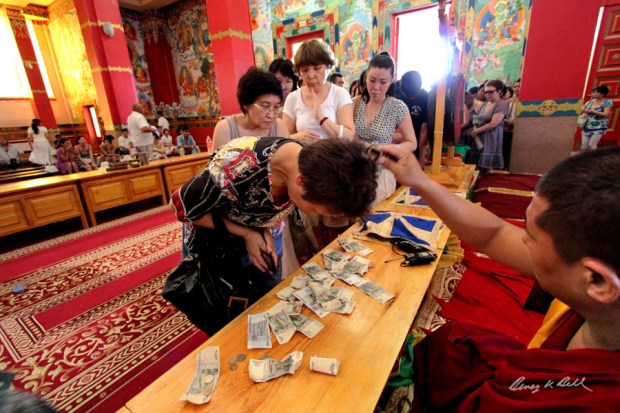
Benoy K Behl
Buddhist traditions know no national boundaries and here we see Indian lamas who are blessing Russian
Buddhists. The new temples of Kalmykia rely upon these Indian lamas, mainly from Ladakh.
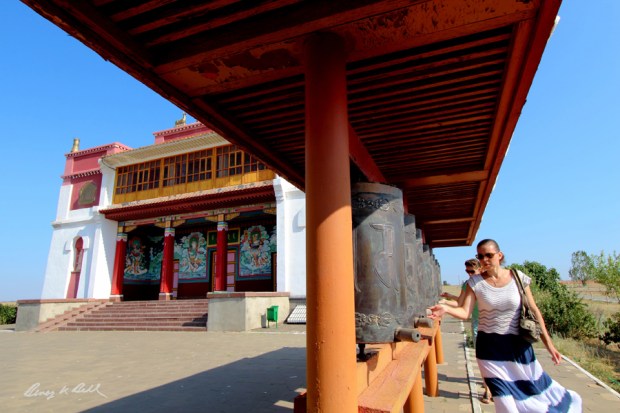
K Behl
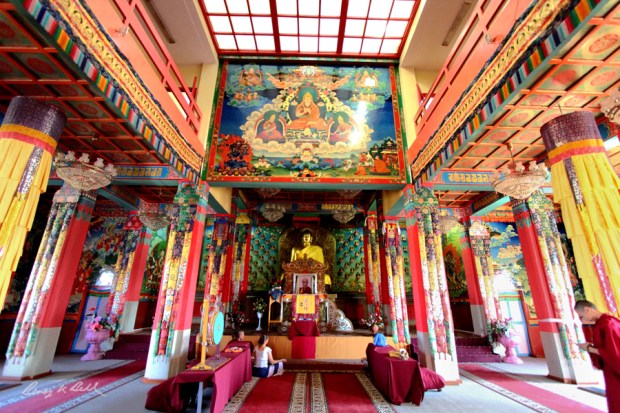
This large and beautiful interior is similar to the style of Buddhist temples in the trans-Himalayan regions
of India. It is marvellous to see the spread of the philosophic and artistic ideas of Vajrayana Buddhism.
Buryatia
Buddhism came to Buryatia in Siberia in the middle of the 17th century CE, from Mongolia and from Tibet. By 1764 CE, Buddhism was recognized as one of the national religions of Russia. Buddhist temples became centres of learning, where Sanskrit, Tibetan and Mongolian languages and manuscripts were studied. By the 17th-18th centuries, the area of Kalmykia, around the river Volga, had become the first Buddhist region of Europe. At the instance of the Buryat Lama Agvan Dorzhiev, in 1915, a Buddhist temple was also built in St. Petersburg.
After the collapse of the Soviet Union in 1991, Buddhism is being revived in Buryatia. Old temples are being restored and new ones built. There is a deep desire of the people to look beyond the mundane material world and to seek spiritual solace in the ancient faith.
It is through monks who have studied in India that Buddhist traditions are being revived today. In historic times, these traditions of Vajrayana Buddhism were taken to many countries by illustrious teachers, such as Guru Padmasambhava of the Nalanda University and Atisa of the Vikramshila University. Today again, in keeping with ancient traditions, India has provided the climate for Buddhist universities and monasteries to flourish on its soil. In the middle of the expanses of Siberia, it is most interesting to come across Russian lamas, all of whom speak Hindi, as they have received their Buddhist education in South India. A vision of life, of the search for the truth beyond the illusory nature of the material world, which was created in the First Millennium BCE, continues in these distant lands till today.
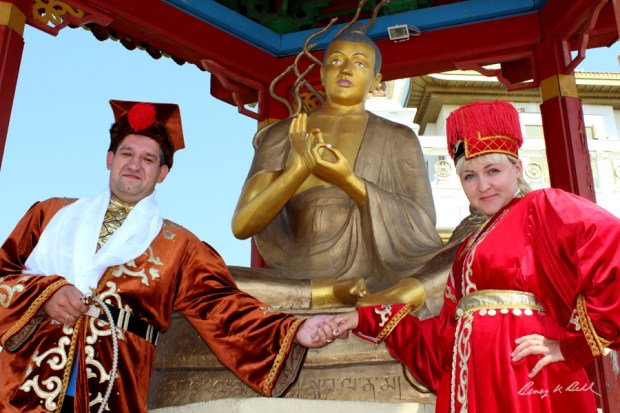
Nalanda, at the Golden Abode of Shakyamuni Temple, Elista, Kalmykia, Russia. Photograph by
Benoy K Behl
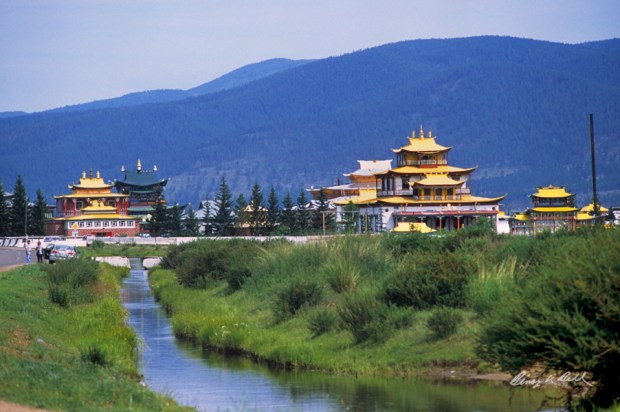
Ivolga Monastery or Ivolginsky Datsan is in the Siberian region of Buryatia, 23 kilometres from Ulan Ude.
The monastery was consecrated in 1945 as the Buddhist spiritual centre of Russia. A Buddhist university
attached to the monastery was opened in 1991.
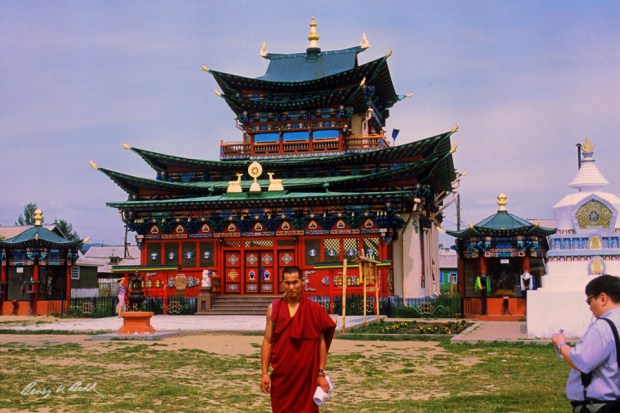
Photograph by Benoy K Behl
It is wonderful to see how, as in ancient times, India is once again the cradle of Buddhist learning. The
lamas of Buryatia and Kalmykia take their spiritual training in South India.
Kalmykia
Kalmykia, in European Russia, on a northern branch of the Silk Route, is another place where Buddhism has been revived. These temples follow the norms of the Vajrayana school of Buddhism. Prayer wheels are very common in this tradition, across a vast region, spanning Tibet, Ladakh, Lahaul-Spiti, Kinnaur, Nepal, Bhutan, Sikkim, Arunachal Pradesh, Mongolia, Buryatia and Kalmykia.
It is wonderful to see Ladakhi lamas teaching the reverential people of European Kalmykia. It was also fascinating to see that the few senior lamas of Kalmykia have all studied Buddhism in India.
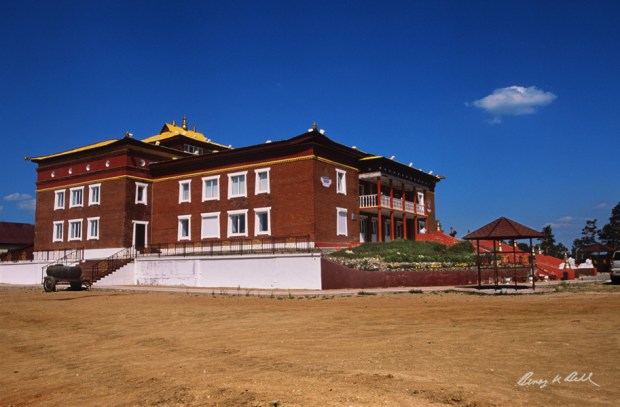
Since 1991, with dissolution of the Soviet Union, there has been a considerable revival of Buddhism in
Buryatia. These new temples are the visible symbols of the spiritual aspirations of the people.
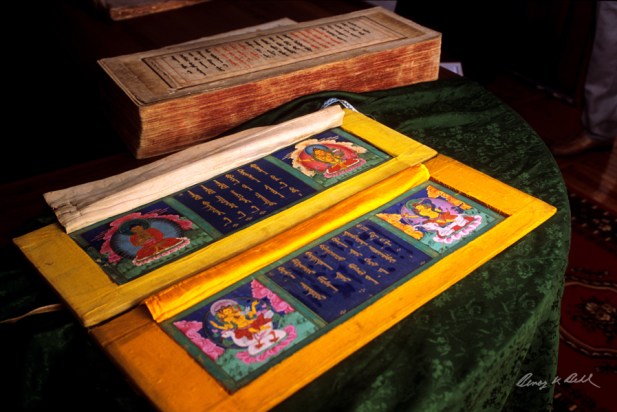
(Collection: Ulan Ude Museum, Buryatia, Russia)
It is from Mongolia that Vajrayana Buddhism spread to Buryatia in Siberia. This is the northern-most
spread of Buddhism in Asia.
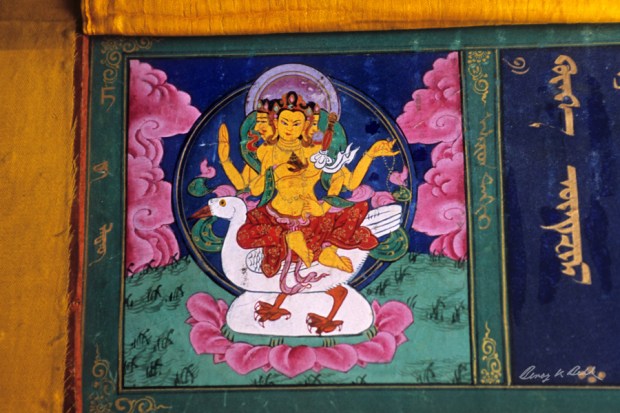
Benoy K Behl
(Collection: Ulan Ude Museum, Buryatia, Russia)
There are many images of Brahma, Indra, Ganesha, Shiva and other Hindu deities, which are commonly
found in Buddhist temples and manuscripts in many countries.
A great new Buddhist temple called Golden Abode of Buddha Shakyamuni has been built in Elista, the capital of Kalmykia. It has today become a symbol of the Buddhist identity of the people of Kalmykia. It is crowded every day with worshippers. Around the temple are statues of seventeen acharayas, or great teachers, of the Nalanda University, who developed the philosophical traditions of Mahayana and Vajrayana Buddhism. It was at the Nalanda and Vikramshila Universities of Bihar that the Vajrayana form of Buddhism practiced in Kalmykia, was created. The best known among the great acharayas of Nalanda are Nagarjuna, Asanga, Aryadeva, Gunaprabha and Atisa. The last-mentioned is one of the teachers who was persuaded to visit Tibet, where he established a tradition of Buddhism which continues till today.
Author is an Indian documentary filmmaker, art historian and photographer.
Disclaimer: Views expressed are personal and do not reflect the official position or policy of FinancialExpress.com Reproducing this content without permission is prohibited.
